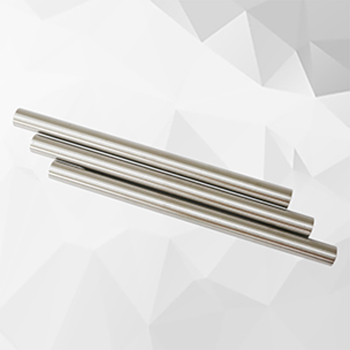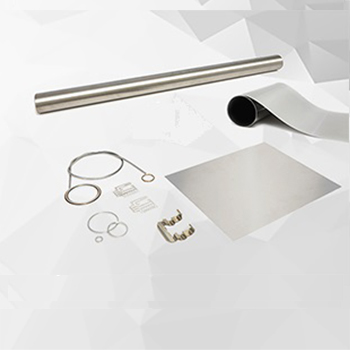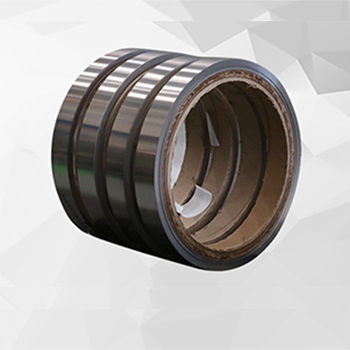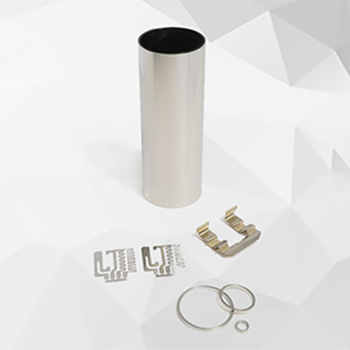Your current browser version is too low, in order to bring you a better browsing effect, please use a higher version browser
When you’re standing next to a roaring turbine or watching a furnace glow at over 900°C, you quickly realize—ordinary metal just can’t take the beating. That’s when special alloys step in. These are the materials that keep engines running, power plants humming, and electronics working in places where failure isn’t an option. Engineers at AT&M (Advanced Technology & Materials Co., Ltd.) run tests on strips so thin you could almost cut paper with them, yet they hold their shape after hours of heat cycling. That’s not marketing—it’s hard-earned metallurgy.

Before going too far, let’s clear up a simple question: what does “special” really mean here? It’s not a fancy label for just any alloy. A special alloy is a deliberate recipe—nickel, cobalt, chromium, maybe a touch of molybdenum—mixed in just the right way to handle specific abuse: blistering heat, saltwater corrosion, magnetic precision. If regular stainless steel is your family sedan, a special alloy is more like a custom-built rally car.
Special alloys are made for jobs where failure has a price tag you don’t want to pay. Think turbine blades that won’t creep after 36 hours at 950°C, or sensor parts that keep their exact size no matter the temperature swing.
The element mix isn’t guesswork—it’s calculated, sometimes down to the decimal point in percentage, based on where the part will live its life.
Standard alloys, like your everyday stainless, are decent all-rounders. But they’re not tuned for that one brutal job. Special alloys sacrifice “versatility” for “perfection” in a very specific environment. It’s a trade most engineers are happy to make when the stakes are high.
Not all special alloys are cousins. AT&M splits them into four distinct clans:
Master Superalloys – The marathon runners in heat endurance.
Precision Alloys – Where magnetic, elastic, or thermal expansion behavior has to be exact.

Special Alloy Strips – Rolled with tight tolerances for industrial machinery.

Precision Strips for Electronics – Ultra-thin, smooth, and clean—made for connectors and tiny electronic guts.

If you’ve ever seen a strip go through a Sendzimir 20-high rolling mill, you know the care it takes to get that surface finish right.
Special alloys shine in the spots where standard metals buckle, pit, or warp.
Picture a gas turbine test cell: after an hour, metal casings are glowing faint red. Special alloys like K418 just keep going—no measurable distortion.
Ship propeller shafts, offshore rigs, chemical plant valves—these see constant attack from salt, acid, or both. A well-designed nickel-chromium alloy grows a protective skin that stops rust in its tracks.
In calibration equipment, even a fraction of a millimeter drift can throw off results. Precision alloys are chosen because they simply refuse to budge, year after year.
Some are in plain sight; others hide inside equipment most people never think about.
Master superalloys turn up in turbine blades, exhausts, and hot-end components. We’re talking 1,000+ flight hours without replacement.
Turbochargers running at higher boost, heavy-duty exhaust valves, high-speed press dies—all benefit from heat-resistant alloys.
From 5G base station connectors to tiny relay springs, precision strips keep signals clean and devices reliable.
Master Superalloys – Nickel-based grades like IN738LC stand up to punishing heat in turbines.
Precision Alloys – Selected for traits like low thermal expansion—ideal in measuring instruments.
Special Alloy Strips – Produced with consistent hardness across the coil, which machinists love.
Precision Strips for Electronics – Flatness tolerances tighter than a human hair for micro-connectors.
Choosing a supplier isn’t just about who can melt metal—it’s about who knows your application.
AT&M’s research labs don’t just publish papers; they feed into new grades and process tweaks. Patents? Plenty. But more importantly—parts that last.
From ISO9001 to aerospace Nadcap approvals, they tick the boxes so you don’t have to explain it to your quality department twice.
Need a strip 0.12 mm thick with a specific hardness profile? They’ve probably done something close. And if not—they’ll experiment.
It’s not the buzzword here—it’s a side effect of making parts that last.
Longer Lifespan: Fewer replacements, less scrap.
Energy-Smart Production: Furnace schedules optimized to cut power spikes.
Green Projects: Alloys that can handle wind turbine gearbox loads or nuclear heat exchangers.
If you’re watching trends—EV motors, space components, and 6G telecom gear are already pushing for new alloy recipes.
Some labs are playing with nano-structured metals. Others are letting AI propose new mixes (ironic, I know). Either way, it’s about squeezing out that last 5% performance without making the material impossible to produce.
Special alloys aren’t just “better metals”—they’re engineered solutions for extreme conditions where failure isn’t an option. Whether it’s a jet turbine enduring relentless heat, a precision sensor demanding zero drift, or a micro-connector in a 5G device, these materials deliver where standard alloys fall short. AT&M’s expertise in superalloys, precision strips, and custom formulations ensures industries can push performance limits without compromising reliability. In a world where efficiency and durability matter more than ever, therefore, special alloys aren’t just useful—they’re indispensable.
Q1: What’s the quick difference between a special alloy and a standard alloy?
A: Special alloys are designed for specific extremes—heat, corrosion, magnetic precision—while standard alloys are general-purpose workhorses.
Q2: Which industries lean on special alloys most?
A: Aerospace, automotive, turbines, electronics, telecom, renewable energy—basically anywhere reliability costs less than failure.
Q3: Do special alloys help with sustainability?
A: Yes—longer-lasting parts mean less waste and better use of resources.
